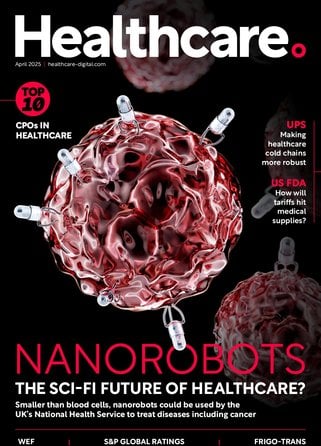Sky Medical Technology 2023 healthcare trends

The COVID-19 crisis has been felt more acutely in healthcare than perhaps any other industry. A growing backlog of patients waiting for elective surgeries has reached a record seven million and the closing of outpatient clinics has stalled clinical trials which could delay the introduction of new treatments.
A more positive outcome has been the increased speed of innovation adopted by healthcare systems. Innovation which would have otherwise taken a decade to adopt, is now being fast tracked into healthcare systems. Medical technology (MedTech) innovation will play a vital role in the years ahead to help healthcare systems tackle the issues triggered by COVID-19, as well as managing the care of the growing ageing population.
Bernard Ross, CEO and founder of Sky Medical Technology shares some clear trends likely to emerge in healthcare during 2023 and these are important considerations for the MedTech industry.
Bernard Ross, CEO and founder, Sky Medical Technology
More efficient healthcare consultations with telehealth
A consequence of the pandemic was an explosive growth in telemedicine – with consultations largely moved to virtual platforms. During the worst COVID-19 outbreaks this helped GPs and nurses remain safe.
“2023 could mark the year that this trend begins to reverse. Without the immediate threat of another pandemic, healthcare professionals are facing something of a backlash from patients, who are struggling to get appointments or are frustrated with remote diagnostics. The reality is that many conditions simply cannot be identified via video or phone calls,” says Ross. “Telemedicine and remote diagnostics will continue, but the future will focus on a hybrid model that recognises the convenience of remote consultations for some but respects the needs for real face-to-face meetings for others.”
Remote healthcare solutions aiding self-management
As the inevitable pressure on healthcare services intensifies, expect to see increased deployment of MedTech that enables patients to monitor their own conditions independently.
“Portable equipment like small wearable devices can help patients manage their conditions remotely, reducing the need for more regular check-ups. The deployment of clinical grade monitoring equipment will increasingly become the norm for the relevant patients,” says Ross. “Remote treatment will also increase, helping patients address issues in the home that previously would have required a hospital or clinic visit. Combining remote healthcare monitoring and management offers patients the opportunity to manage their wellbeing effectively at home and receive the attention they need only when they need it. For patients experiencing delays in surgery, this will keep them comfortable while awaiting treatment.”
Faster MedTech adoption
Healthcare services have traditionally been slow to adopt new treatments; changes need to demonstrate they deliver better clinical outcomes, and this takes time. When most new treatments were pharmaceutical, there were concerns around potential long term side effects.
“With the development of the MedTech industry, treatments are demonstrating real patient benefits far quicker. MedTech solutions can speed up healing by double or more, and in some cases identify and prevent conditions from developing,” says Ross. “The necessity driven by the pandemic has encouraged faster and more frictionless adoption of MedTech, supported by healthcare systems which are globally recognising that technology can effectively bridge the gap between increased medical demand and limited budgets.”
Driving sustainability in healthcare
Healthcare will not be immune to the growing global climate crisis and 2023 will see an emphasis on sustainable solutions that drive a more circular healthcare system.
“MedTech companies find themselves increasingly challenged to demonstrate compliance with high levels of sustainability as part of them becoming a preferred supplier,” Ross adds. “Clinicians will look to MedTech innovation that can reduce the environmental impact of the care they provide, solutions that are good for the planet – not just those that do less harm. Clinicians will want to feel they are doing their bit!”
Strengthening healthcare supply chains
“Another key trend of 2023 will be MedTech companies being challenged to demonstrate how they will ensure continuity of supply in all circumstances,” explains Ross. “The recent supply chain issues in China, combined with the impact of the Russia-Ukraine crisis, have demonstrated that an uncertain world has global implications, and the healthcare industry is no exception. Healthcare systems are looking to ensure they can deliver continuity of care in an unpredictable world, particularly that drugs and MedTech solutions are always available.”
More effective healthcare delivery
As more MedTech solutions are rolled out in 2023, there will be new challenges and opportunities for the industry.
“Better solutions for patient care that can demonstrably tick the dual boxes of improved outcomes and reduced cost will enjoy many less barriers to adoption,” explains Ross. “This adoption, in turn, will provide additional opportunities to deliver value to healthcare systems and challenge the standard of care status quo across both inpatient and outpatient treatments.”



